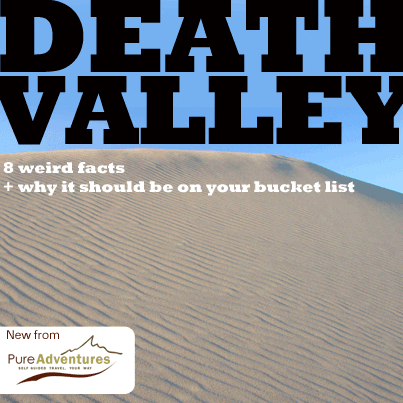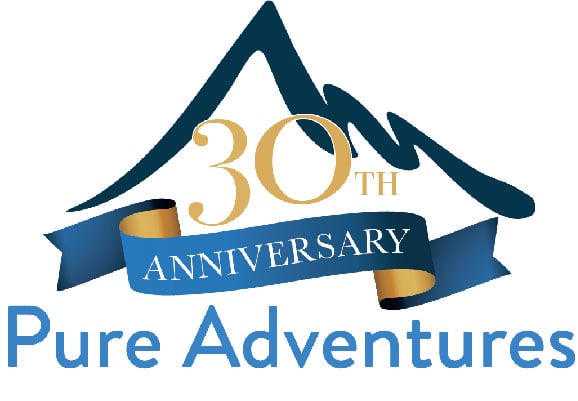
Death Valley is synonymous with extremes: extremely hot, extremely arid, extremely mystical. But despite the legendary crossing of the first emigrants to cross death valley in 1849, Death Valley still draws millions of tourists every year, all attracted to this geographic rogue. Pure Adventures is beyond excited to bring cyclists and hikers to Death Valley and Badwater Basin on one of our newest guided US tours. From exploring the eclectic Scotty’s Castle to climbing around Artist’s Palette, this tour takes in the best and most powerful sights throughout Death Valley. Almost like being on another planet, a trip to Death Valley should be on your bucket list because it’s truly like no other place on Earth.
- At 3.4 million acres, Death Valley is the largest national park in the United States.
- Humans made their mark in Death Valley at least 9,000 years ago, with rock art and other artifacts left behind as evidence.
- The highest recorded temperature in Death Valley is 134F, measured in July, 1913. (Don’t worry, our tour is offered between November and April, when temperatures range between a more moderate 40F and 70F).
- Despite it’s foreboding name, Death Valley is home to bighorn sheep, reptiles, lizards, snakes, amphibians plus more than 300 species of birds, not to mention the explosion of fauna that erupt after a rainfall.
- Dozens of scenes from Star Wars have been filmed in Death Valley, including Artist’s Palette (the Sandcrawler scene from Star Wars Episode IV: A New Hope), Golden Canyon (Jawa scenes from Star Wars Episode IV: A New Hope) and Mesquite Flat Sand Dunes (Droid scenes from Star Wars Episode IV: A New Hope). Blogger Steve Hall does an amazing job of lining up film scenes and locations!
- Artist’s Palette, aptly named for the stunning and inspiring range of colors in this rock unit, gets its colors from oxidation of different metals (red, pink and yellow is from iron salts, green is from decomposing tuff-derived mica, and manganese produces the purple).
- Scientists can’t agree how old Ubehebe Crater is. Initial research believed it’s between 2,000 to 7,000 years old, but new findings peg it at 800 years old. But everyone agree it’s huge – half a mile wide and 500 to 777 feet deep.
- Only 15 miles separate the highest elevation in Death Valley National Park (Telescope Peak at 11,049 feet) and Badwater Basin (282 feet below sea level).
